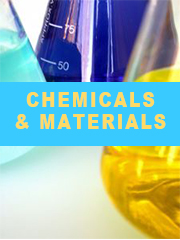Report overview
VCM is a colorless compound, which is used to produce PVC. It is among the top twenty largest petrochemicals. VCM is used in the manufacture of ethylenediamine to produce resins and the production of chlorinated solvents. VCM is used as an aerosol propellant and is also a starting product for polyvinyl resins. It is highly flammable, has a sweet odor, and can emit toxic fumes of carbon monoxide, carbon dioxide, phosgene, and hydrogen chloride. Its exposure to fire and intense heat for a long period may result in rupturing of containers violently.
This report aims to provide a comprehensive presentation of the global market for Vinyl Chloride Monomer (VCM), with both quantitative and qualitative analysis, to help readers develop business/growth strategies, assess the market competitive situation, analyze their position in the current marketplace, and make informed business decisions regarding Vinyl Chloride Monomer (VCM). This report contains market size and forecasts of Vinyl Chloride Monomer (VCM) in global, including the following market information:
Global Vinyl Chloride Monomer (VCM) Market Revenue, 2018-2023, 2024-2030, ($ millions)
Global Vinyl Chloride Monomer (VCM) Market Sales, 2018-2023, 2024-2030, (K MT)
Global top five Vinyl Chloride Monomer (VCM) companies in 2022 (%)
The global Vinyl Chloride Monomer (VCM) market was valued at US$ million in 2022 and is projected to reach US$ million by 2029, at a CAGR of % during the forecast period. The influence of COVID-19 and the Russia-Ukraine War were considered while estimating market sizes.
According to the report, one driver in the market is increased demand from construction industry. VCM is mainly used in the production of PVC, which is mostly used in the construction industry. The global construction market is expected to grow at a CAGR of 4% from $8.7 trillion in 2016 to $10.5 trillion in 2021. The increase in population in countries of the Middle East and Africa such as Qatar, the UAE, and Saudi Arabia will witness a huge growth in infrastructural developments. APAC is anticipated to lead the construction market with China and India, acting as the major driver.
We surveyed the Vinyl Chloride Monomer (VCM) manufacturers, suppliers, distributors and industry experts on this industry, involving the sales, revenue, demand, price change, product type, recent development and plan, industry trends, drivers, challenges, obstacles, and potential risks.
Total Market by Segment:
Global Vinyl Chloride Monomer (VCM) Market, by Type, 2018-2023, 2024-2030 ($ Millions) & (K MT)
Global Vinyl Chloride Monomer (VCM) Market Segment Percentages, by Type, 2022 (%)
Liquid Vinyl Chloride Monomer
Solid Vinyl Chloride Monomer
Global Vinyl Chloride Monomer (VCM) Market, by Application, 2018-2023, 2024-2030 ($ Millions) & (K MT)
Global Vinyl Chloride Monomer (VCM) Market Segment Percentages, by Application, 2022 (%)
Industrial
Agricultural
Construction
Automobile
Others
Global Vinyl Chloride Monomer (VCM) Market, By Region and Country, 2018-2023, 2024-2030 ($ Millions) & (K MT)
Global Vinyl Chloride Monomer (VCM) Market Segment Percentages, By Region and Country, 2022 (%)
North America
US
Canada
Mexico
Europe
Germany
France
U.K.
Italy
Russia
Nordic Countries
Benelux
Rest of Europe
Asia
China
Japan
South Korea
Southeast Asia
India
Rest of Asia
South America
Brazil
Argentina
Rest of South America
Middle East & Africa
Turkey
Israel
Saudi Arabia
UAE
Rest of Middle East & Africa
Competitor Analysis
The report also provides analysis of leading market participants including:
Key companies Vinyl Chloride Monomer (VCM) revenues in global market, 2018-2023 (Estimated), ($ millions)
Key companies Vinyl Chloride Monomer (VCM) revenues share in global market, 2022 (%)
Key companies Vinyl Chloride Monomer (VCM) sales in global market, 2018-2023 (Estimated), (K MT)
Key companies Vinyl Chloride Monomer (VCM) sales share in global market, 2022 (%)
Further, the report presents profiles of competitors in the market, key players include:
BASF
Formosa Plastics
Occidental Petroleum
The Dow Chemical
Westlake Chemical
INEOS Vinyls UK
LG Chem
Reliance Industries
Tokuyama
Qatar Vinyl
Outline of Major Chapters:
Chapter 1: Introduces the definition of Vinyl Chloride Monomer (VCM), market overview.
Chapter 2: Global Vinyl Chloride Monomer (VCM) market size in revenue and volume.
Chapter 3: Detailed analysis of Vinyl Chloride Monomer (VCM) manufacturers competitive landscape, price, sales and revenue market share, latest development plan, merger, and acquisition information, etc.
Chapter 4: Provides the analysis of various market segments by type, covering the market size and development potential of each market segment, to help readers find the blue ocean market in different market segments.
Chapter 5: Provides the analysis of various market segments by application, covering the market size and development potential of each market segment, to help readers find the blue ocean market in different downstream markets.
Chapter 6: Sales of Vinyl Chloride Monomer (VCM) in regional level and country level. It provides a quantitative analysis of the market size and development potential of each region and its main countries and introduces the market development, future development prospects, market space of each country in the world.
Chapter 7: Provides profiles of key players, introducing the basic situation of the main companies in the market in detail, including product sales, revenue, price, gross margin, product introduction, recent development, etc.
Chapter 8: Global Vinyl Chloride Monomer (VCM) capacity by region & country.
Chapter 9: Introduces the market dynamics, latest developments of the market, the driving factors and restrictive factors of the market, the challenges and risks faced by manufacturers in the industry, and the analysis of relevant policies in the industry.
Chapter 10: Analysis of industrial chain, including the upstream and downstream of the industry.
Chapter 11: The main points and conclusions of the report.
